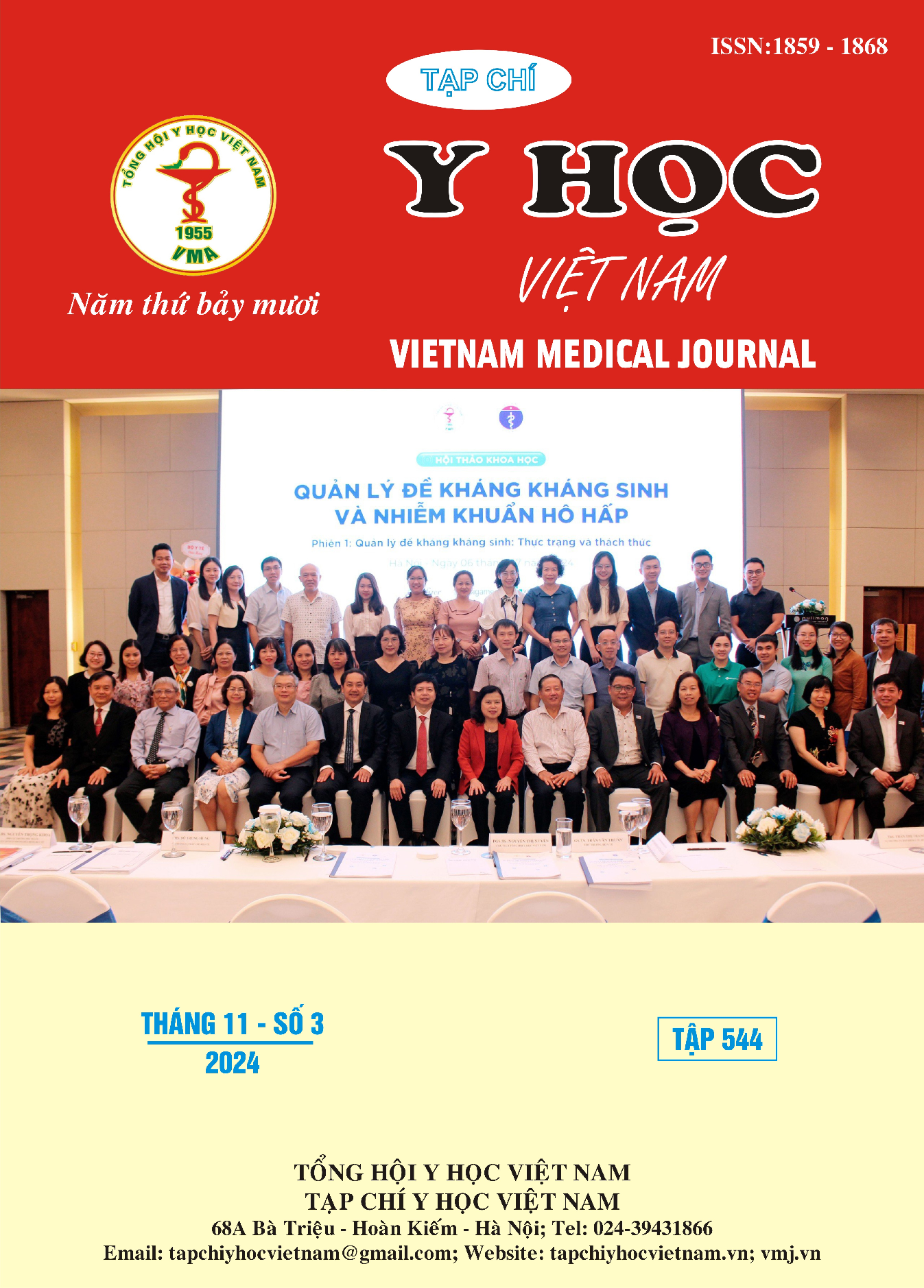CLINICAL FEATURES, SUBCLINICAL CHARACTERISTICS, CAUSES AND OUTCOMES OF PATIENTS WITH OUT-OF-HOSPITAL CARDIAC ARREST IN THE EMERGENCY DEPARTMENT AT THE UNIVERSITY MEDICAL CENTER, UNIVERSITY OF MEDICINE AND PHARMACY AT HO CHI MINH CITY, VIETNAM
Main Article Content
Abstract
Background: Out-of-hospital cardiac arrest (OHCA) is one of the most critical conditions in medical practice. The survival rate and the rate of return of spontaneous circulation (ROSC) remain low. Understanding the clinical features, subclinical characteristics, causes and outcomes in this patient group can enhance our knowledge of the prevalence of cardiac arrest occurring outside the hospital and provide additional clinical data to improve patient treatment. Objective: To describe the clinical features, subclinical characteristics, causes and outcomes in patients with out-of-hospital cardiac arrest. Method: A cross-sectional descriptive study was conducted on patients with out-of-hospital cardiac arrest from December 2021 to August 2024. Results: A total of 93 patients with out-of-hospital cardiac arrest were analyzed. The average age was 66.86 ± 15.9 years. Dyspnea was a common symptom recorded before cardiac arrest, affecting 66.3% of patients. Additionally, a history of chronic disease was present in 90.3% of the patients. Among those who experienced OHCA, 89.24% had a witness present; however, no cases were recorded in which bystanders performed cardiopulmonary resuscitation (CPR). The most common location for cardiac arrest was in a private vehicle while en route to the hospital. Cardiovascular disease was identified as the leading cause of cardiac arrest, accounting for 44.08%. In our study, the rate of ROSC was nearly 57%, while only 9.68% of patients were conscious at discharge. The cut-off point for the time from cardiac arrest to CPR (No-flow: NF) was 15 minutes, with an AUC of 0.597 (95% CI: 0.455-0.738), and the CPR duration (Low-flow: LF) cut-off was 36 minutes, with an AUC of 0.929 (95% CI: 0.869-0.989). Conclusion: The most common location for cardiac arrest was in a private vehicle while on the way to the hospital. There were no cases of bystanders performing chest compressions. Cardiovascular disease was the leading cause of OHCA. The survival rate remained low, highlighting the importance of early cardiopulmonary resuscitation for improving patient outcomes. We identified a 15-minute no-flow cut-off time and a 36-minute low-flow cut-off time, both of which significantly impact patient prognosis.
Article Details
Keywords
Out-of-hospital cardiac arrest, return of spontaneous circulation, cardiopulmonary resuscitation.
References
2. Berdowski J, Berg RA, Tijssen JG, Koster RW. Global incidences of out-of-hospital cardiac arrest and survival rates: Systematic review of 67 prospective studies. Resuscitation. Nov 2010; 81(11): 1479-87.doi: 10.1016/ j.resuscitation.2010.08.006
3. Jacobs I, Nadkarni V, Bahr J, et al. Cardiac arrest and cardiopulmonary resuscitation outcome reports: update and simplification of the Utstein templates for resuscitation registries: a statement for healthcare professionals from a task force of the International Liaison Committee on Resuscitation (American Heart Association, European Resuscitation Council, Australian Resuscitation Council, New Zealand Resuscitation Council, Heart and Stroke Foundation of Canada, InterAmerican Heart Foundation, Resuscitation Councils of Southern Africa). Circulation. Nov 23 2004;110(21):3385-97. doi:10.1161/01.CIR.0000147236.85306.15
4. Hoàng Bùi Hải, Vũ Đình Hùng, Đỗ Ngọc Sơn, và cộng sự, Kết quả khảo sát ngừng tuần hoàn ngoại viện không do chấn thương tại bốn bệnh viện ở Hà Nội theo mẫu Utstein. Tạp chí Nghiên cứu Y học. 2020;134(10):8-15.
5. Đặng Đức Hoàn, Tô Văn Hải, Mai Mạnh Tam, và cộng sự Nhận xét về cấp cứu bệnh nhân ngừng tuần hoàn tại khoa Cấp cứu Bệnh viện Thanh Nhàn. Tạp chí Tim mạch học Việt Nam. 2014;66
6. Đỗ Quốc Huy, Huỳnh Ngọc Hớn, Phạm Ngọc Huy Tuấn, và cộng sự Nghiên cứu tình hình ngưng tim trước khi nhập viện đến khoa Cấp cứu bệnh viện cấp cứu Trưng Vương 2013-2014. Hội Hồi sức cấp cứu thành phố Hồ Chi Minh. 2014;
7. Lương Văn Sinh. Đặc điểm bệnh nhân ngừng tim ngừng thở trước nhập viện tại khoa cấp cứu BV quận Tân Phú. Tạp chí Y học Việt Nam. 2017;
8. Ong ME, Shin SD, De Souza NN, et al. Outcomes for out-of-hospital cardiac arrests across 7 countries in Asia: The Pan Asian Resuscitation Outcomes Study (PAROS). Resuscitation. Nov 2015; 96:100-8. doi: 10.1016/j.resuscitation.2015.07.026
9. Lê Bảo Huy , Nguyễn Thị Thu Hương , Trần Thị Luận , và cộng sự Nhận xét tình hình cấp cứu ngưng tuần hoàn hô hấp trước khi vào viện tại khoa cấp cứu bệnh viện Thống Nhất (2015). Y Học Tp Hồ Chí Minh. 2015;19(5): 197-204.
10. Đỗ Ngọc Sơn Đặc điểm lâm sàng của bệnh nhân ngừng tuần hoàn ngoại viện nhập khoa Cấp Cứu- Bệnh viện Bạch Mai. Tạp chí Y học Việt Nam. 2016;440
11. Yan L, Wang L, Zhou L, et al. Factors predicting the return of spontaneous circulation rate of cardiopulmonary resuscitation in China: Development and evaluation of predictive nomogram. Heliyon. Aug 30 2024; 10(16): e35903. doi: 10.1016/ j.heliyon.2024 .e35903


